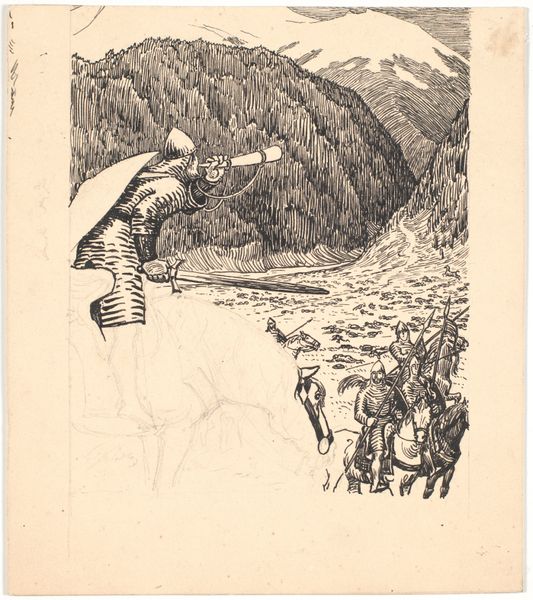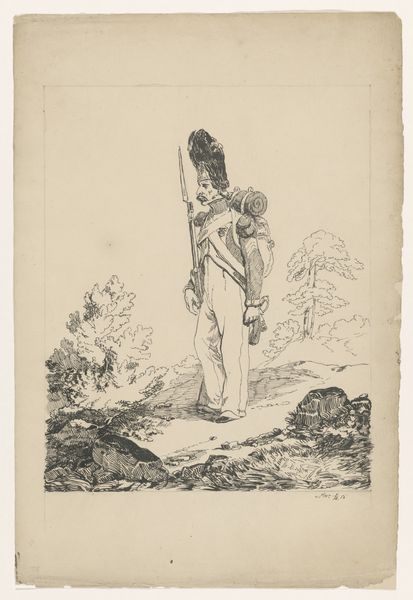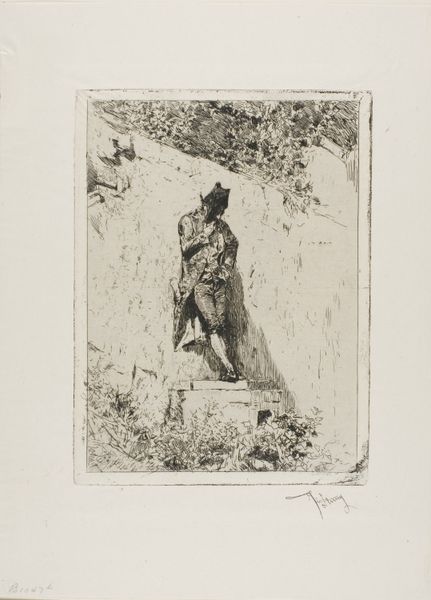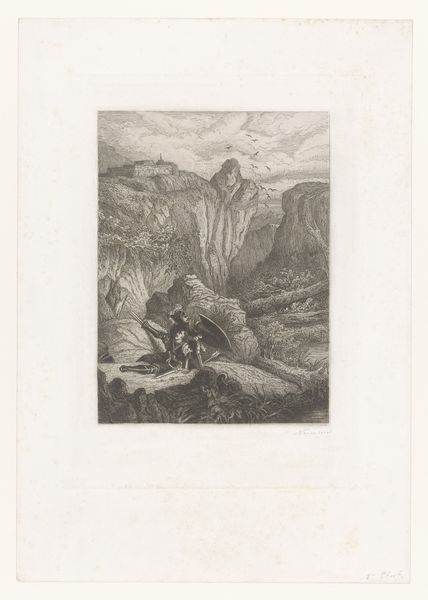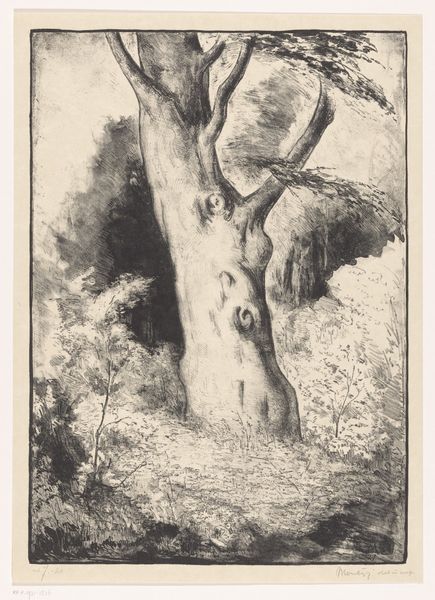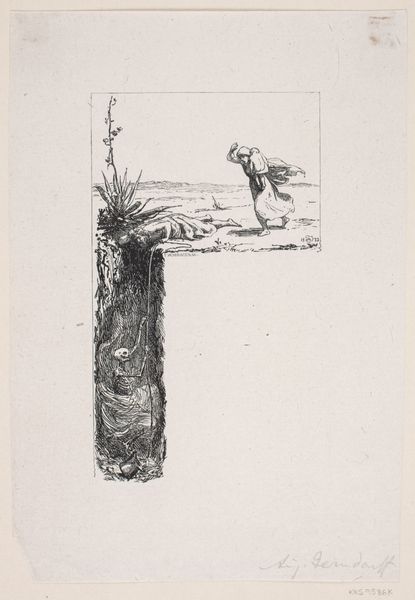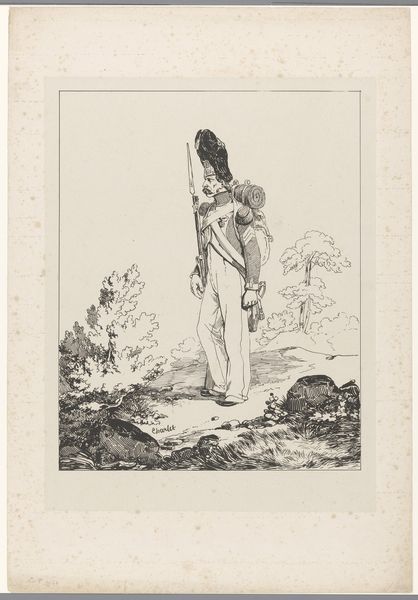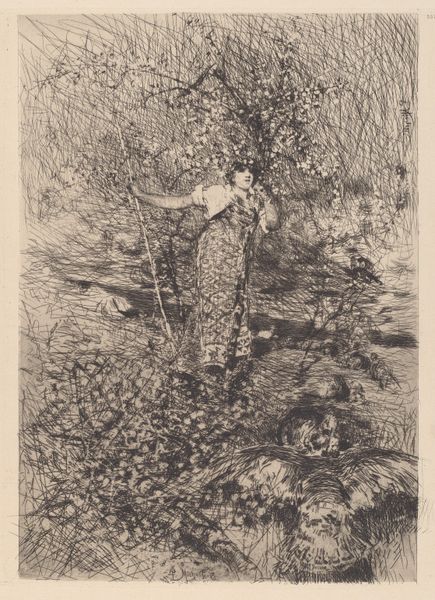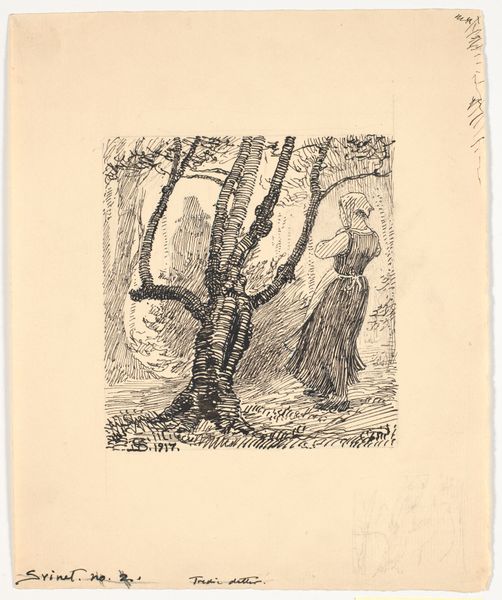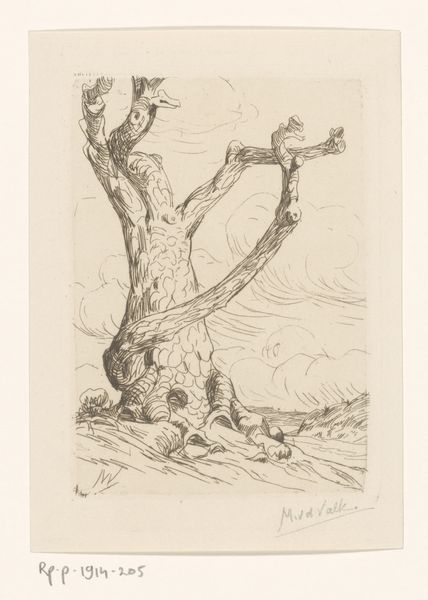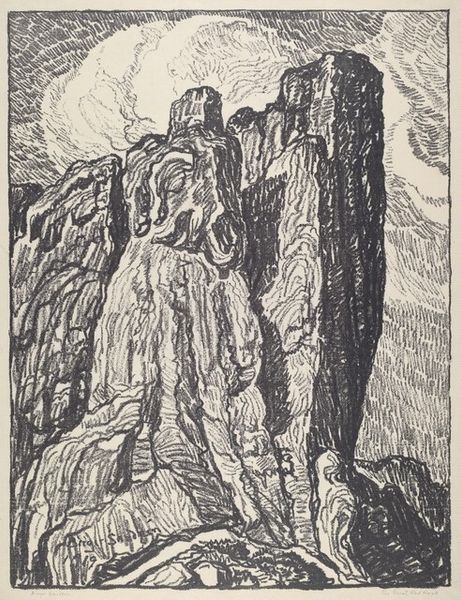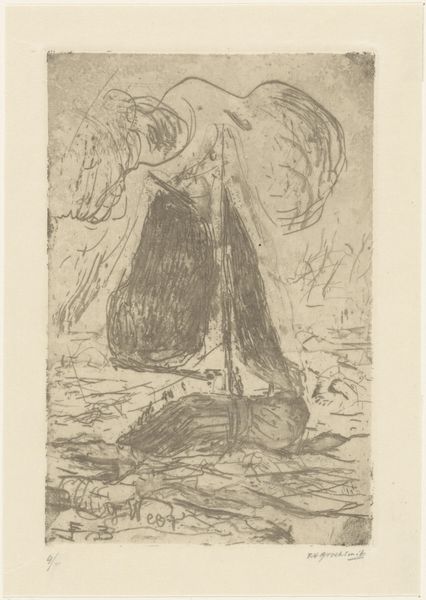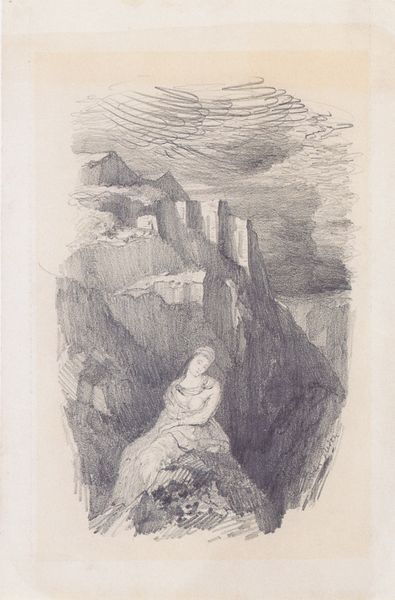
drawing, paper, ink
#
drawing
#
ink drawing
#
medieval
#
narrative-art
#
landscape
#
figuration
#
paper
#
ink
#
history-painting
Dimensions: 290 mm (height) x 182 mm (width) (bladmaal)
Curator: Ah, look at this poignant drawing by Niels Skovgaard, made in 1896. It’s entitled "\u00c6rkesbisp Turpins d\u00f8d" – Archbishop Turpin’s Death – rendered meticulously in ink on paper. It depicts a scene of both anguish and…something else. Editor: My first thought? It's utterly captivating! It pulls me right into a medieval drama, a story whispered from long ago. There is such dramatic and tragic beauty here! The almost barren foreground heightens the sense of isolation, of ending. Curator: Precisely! Skovgaard, rooted in Danish national romanticism, was fascinated by the medieval sagas and folklore. He channeled these national narratives through images like this. The image itself illustrates the death of Archbishop Turpin from the Song of Roland. Notice how one of Roland’s comrades is carrying his limp form. Editor: It's the hand that gets me every time. Turpin's hand, raised towards the heavens even in his last moments, creates such a sense of pathos, like a final, desperate plea. The delicate lines, creating such rough texture… the entire drama plays out on that upward reach! Curator: Consider how Skovgaard used the ink medium to bring texture to the piece, creating depth in both the landscape and figures through intricate line work. He evokes emotion through sharp contrasts between light and shadow, really forcing the tragedy forward. It reflects a moment fraught with loss. But what does this imagery convey about the archbishop? Editor: It is something about his resolve that speaks loudest for me, despite the visible surrender. The warrior carrying the limp body in the background also makes a very dramatic contrast. In him, I sense more duty than pain. Skovgaard shows how the spirit transcends mortal coil. Curator: And doesn't it offer a glimpse into a deeply Christian cultural imaginary? In Skovgaard’s time, the historical drama functioned almost as a stand-in for broader themes of national identity and collective sacrifice, particularly in the wake of territorial losses to Germany. Editor: It’s as though Skovgaard is trying to pull the veil between worlds. He is telling stories of yesterday that carry their own timeless truths. Stories like this always manage to awaken something deep within. Curator: Indeed, reflecting on Skovgaard's rendering here, we might say he asks us to contemplate death and perseverance amidst loss, perhaps, offering solace and national resolve in equal measure. Editor: Ultimately, a small image, yes, but large in heart! I walk away wondering if this echoes in our hearts as bravely now as it might have then!
Comments
No comments
Be the first to comment and join the conversation on the ultimate creative platform.
